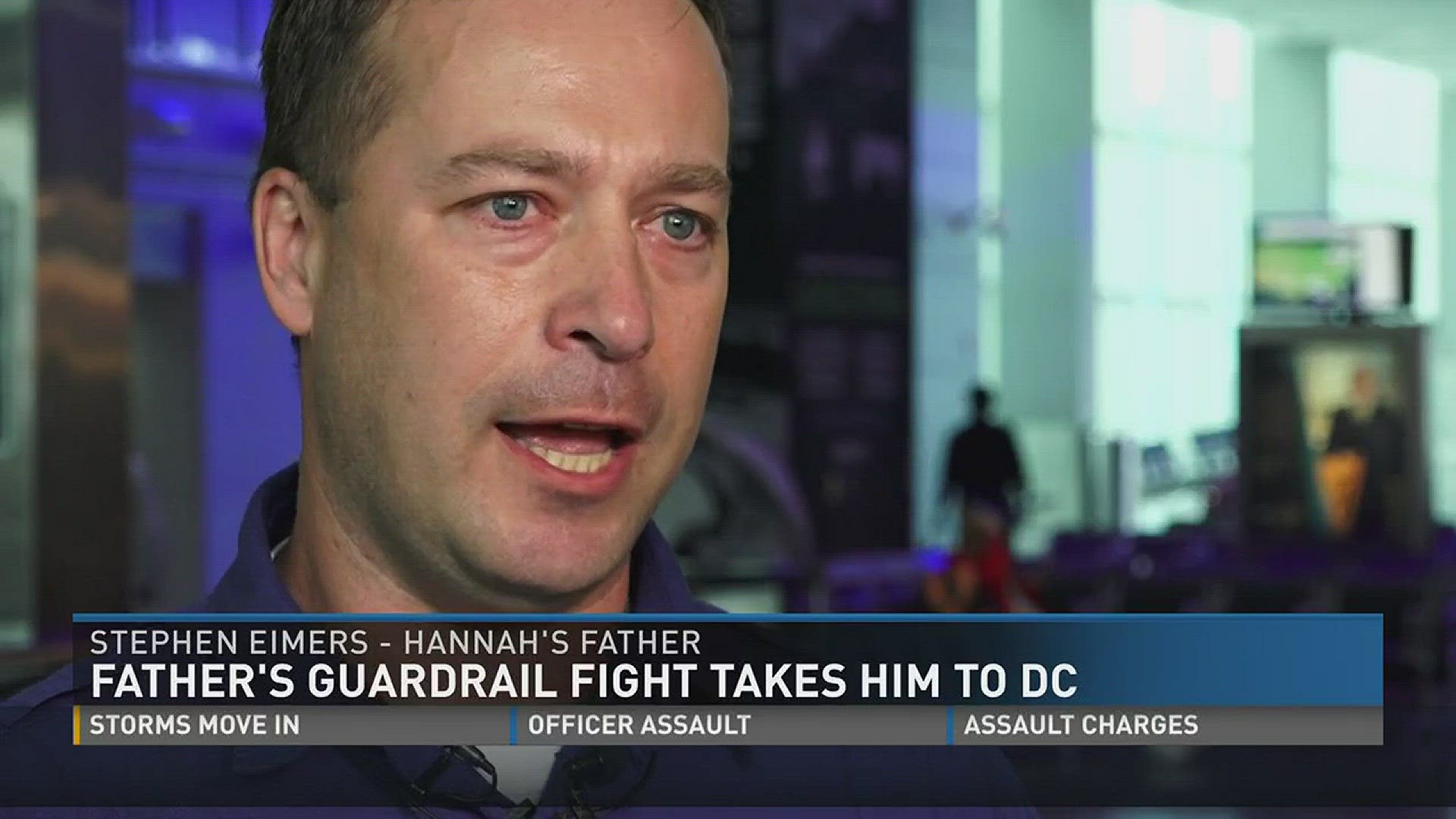The federal body charged with investigating a controversial guardrail linked to fatal crashes has so far found no safety issues with the device, according to a new memo.
At issue is the Lindsay X-Lite guardrail terminal. Guard rail terminals are installed on the end of guardrails, and are intended to ‘zipper’ the rail clear of a vehicle in a crash. Critics of the X-Lite believe it’s more likely to malfunction in crashes above 45 miles per hour, impaling a car with dire consequences.
At least 7 deaths have been linked to X-Lites - 4 in Tennessee, 2 in Missouri and 1 in Virginia. Tennessee has committed to removing the 1800 X-Lites installed statewide.
The Federal Highway Safety Administration is reviewing the X-Lite’s letter of eligibility – the document that approves the device for federal reimbursement. If the letter were revoked, it would likely effectively halt new installations of the device.
The investigation began at the request of Stephen Eimers, of Loudon County. Eimers’ 17-year-old daughter Hannah was killed in a crash involving an X-Lite in 2016. The rail pierced her car on I-75, killing her instantly.
In a May 3 memo, FHWA acting associate administrator Elizabeth Alicandri wrote that an outside expert reviewed the X-Lite’s original crash test data, and found it met the criteria in place at the time.
“The expert found no notable concerns with the original crash test report,” Alicandri wrote.
“That’s nonsense,” Eimers told 10News Thursday.
Eimers reiterated his concerns with the original testing, which was performed by a company owned by Lindsay.
“You have a huge, huge issue. You have a conflict,” Eimers said.
A 2016 report from the U.S. Government Accountability Office took issue with this practice - finding 6 of the 9 crash testing labs evaluate products tied to the parent company, calling it a "potential threat to lab independence."
"FHWA does not have a process for formally verifying the testing outcomes and making its own or providing for an independent pass/fail determination," the report reads. "Developing a process for third party verification of roadside safety hardware’s lab test results could provide greater assurance that potential threats to independence are fully addressed."
The FHWA is still evaluating "in-service" data from states that have installed the X-Lite. 33 states have the X-lite on their approved products list, Alicandri wrote, but only 29 have it installed on state roadways. Of the 14,000 devices nationwide, FHWA found 80 percent are in 7 states: Tennessee, West Virginia, Massachusetts, Maryland, Texas, North Carolina and Virginia.
Six states reportedly removed the device from approved lists: Tennessee, Georgia, Missouri, Oregon, Virginia and Arizona.
Alicandi’s memo also cites a pilot examination of actual crash data for several rails in four states: Missouri, California, Massachusetts and Pennsylvania.
“In considering the 200-plus crashes, the ratio of Fatality + Serious Injury per total crashes does not lead to any conclusions that any of the devices, including the Lindsay X-Lite, are unsafe,” Alicandri wrote. “This finding does not replace the in-service experiences that [state DOTs] can contribute.”
“The X-Lite guardrail end terminal has successfully passed crash and safety tests in accordance with FHWA standards and criteria, and remains qualified for use on America’s roadways,” wrote a spokesperson for the Lindsay Corporation. “As experts such as FHWA have widely recognized, there are impact conditions that exceed the performance expectations of all road safety equipment. Many factors can affect the severity of an impact, including vehicle speed, highway design, type and size of a vehicle, installation and maintenance of the product, and the angle at which a vehicle makes impact--and the equipment’s inability to singly prevent every tragedy does not indicate a flaw or defect.”

